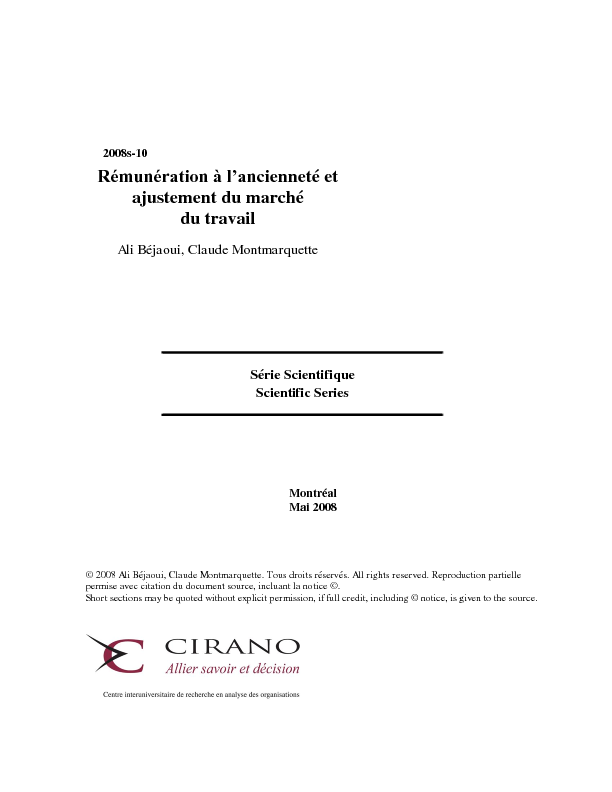Rémunération à l'ancienneté et ajustement du marché du travail
The labour market's ability to adjust to the current demographic shock is a central concern for labour market policies. An aging population could affect the economy's ability to adjust, not only to the aging population shock itself, but also to those associated with the business cycle, international trade and technological changes (Kuhn, 2003). This study contributes to discussions about the ways in which organizations adjust to such an increasingly turbulent environment. Among others, seniority-based pay has been identified as a factor that could potentially hinder an organization's ability to adjust to the market, within the context of an aging workforce. This study focuses on the use of non-standard jobs (or numerical flexibility) and variable compensation as strategies to avoid seniority-based pay. Using unique data that match employers and employees at the micro level, we investigated the link between the demographic composition of workplaces and the adoption of either or both « flexibilization » strategies. Consequently, we conclude that there is no link between workplace demographics and the adoption of variable compensation. However, a high proportion of older workers (45 years and older) in the workplace is positively related to the use of numerical flexibility. Moreover, a complementarity in the use of both strategies emerged from our study. The implications of these results on policies are numerous. If organizations continue experiencing difficulties in resorting to flexible compensation, they will likely continue to adjust by relying on numerical flexibility. While this type of flexibility allows older workers to ease into retirement gradually, women to cope with both working and caring for children or aging parents, and youths to combine work and studies, it can also have detrimental effects. Over time, this flexibilization strategy can lead to an underinvestment in training, a lack of savings for retirement and an increase in wage inequalities. The main challenge of the new generation of public policies lies in the identification of an effective compromise between incentives and activation programs that would allow a balance between economic imperatives (flexibility) and social aspirations (security).
[ - ]




